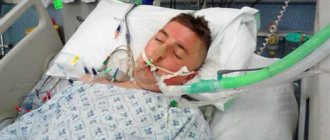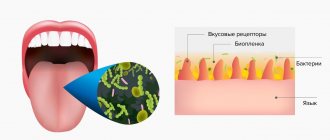Bad breath is a huge problem for many people who are forced to constantly “chew” it with chewing gum, use various fresheners and at the same time are still embarrassed to communicate normally. If you have to constantly "keep your distance" when talking, refuse spontaneous kisses (because you have to run to the bathroom first and brush your teeth immediately!) and spend a lot of money on fresheners, it may be easier to find the real cause of your bad breath and finally eliminate it ?
Causes
Why does my breath smell after tooth extraction? There are several factors that provoke the problem:
- Patient's disregard for doctor's recommendations. After tooth extraction, the dentist instructs the patient about the rules of behavior in the postoperative period. For speedy wound regeneration, it is necessary to refrain from consuming hot and cold foods for 24 hours, as well as from rinsing the mouth with antiseptic solutions. Also, you should not touch the hole with your hands, so as not to provoke the destruction of epithelial tissue.
- No blood clot. During complex operations, for example, after the removal of a wisdom tooth, dry socket syndrome is often observed due to a previous infection of the alveoli. Pathogenic flora prevents a clot from forming. Complications after surgery appear within a few days. Patients report throbbing pain and swelling of the cheek.
- The presence of chronic infectious diseases in the oral cavity. The presence of pathogenic flora increases the risk of wound infection after tooth extraction. For people with chronic dental diseases, extraction is prescribed in extreme cases due to the high risk of developing negative consequences.
Structural features
The maxillary (maxillary, main) sinus is located inside the bone of the upper jaw. It is delimited from the oral cavity by the alveolar process. It forms the bottom of the cavity. The volume of the cavity of the upper jaw can be up to ten cubic centimeters. She has a communication with the nasal cavity. The inside of the cavity is lined with mucous tissue.
The structure has features that make it easy to damage:
- Sometimes the thickness of the bone plate between the bottom of the cavity and the roots of the teeth does not exceed one millimeter.
- There is a variant of the location of the roots of the second and first molars, when they penetrate into the cavity and are delimited from it only by the mucous membrane that lines the sinuses.
- The bone plate quickly thins out during inflammatory processes.
- Small thickness of trabeculae of the upper jaw bone.
Such structural features cause slight damage to its wall, even when the doctor did not violate any rules and did not apply significant force.
Bad breath after wisdom tooth removal
Consequences after extraction appear due to the location of wisdom teeth and their massive roots. Due to inflammatory complications, an unpleasant taste appears in the mouth.
Other causes of the problem include the formation of a cyst at the site of the torn element. Due to a benign tumor, the body tries to separate healthy soft tissues from infected ones. Inside the cyst there is a serous fluid that gives off a bad odor. If not treated in a timely manner, a benign neoplasm transforms into a gumboil or breaks out.
People with diabetes often experience hematomas after wisdom tooth extraction. To eliminate the tumor, the doctor makes an incision in the soft tissues of the gums and installs a drainage in the surgical field.
Bad breath accompanies heavy bleeding, which occurs when the figure eight is removed. If the symptom persists for more than 4 hours, you should immediately contact a surgeon. If necessary, the doctor will close the wound with cosmetic sutures.
Bad breath after tooth extraction is the first sign of developing disorders. Only a dentist can identify the exact cause of the problem and find a way to eliminate it.
Old sinus perforation
If the defect is not detected and eliminated in a timely manner, acute inflammation will subside. Within a month, the patient develops a fistula. It connects the gum surface and the sinus cavity. Signs of a chronic inflammatory process appear. This will be a serious complication.
The patient has complaints:
- The presence of dull pain in the upper part of the cheek, of a constant nature. They radiate to the eye area and temporal region.
- Feeling of nasal congestion on one side.
- Separation of pus from the nose and from the fistula on the upper jaw.
- Swelling of the middle third of the face on the affected side.
- Air movement through the defect.
- Difficulty speaking.
- Getting fluid from the mouth into the nose.
Therapy of old processes is associated with significant difficulties. Patients are indicated for surgical treatment in a hospital.
Operation stages:
- Opening of the main sinus of the upper jaw.
- Removing foreign bodies.
- Excision of necrotic areas and granulations.
- Excision of tissues forming the fistula.
- Closing the defect.
After the operation, drug therapy with the use of antibiotics, anti-inflammatory and decongestant drugs is mandatory for a course of two weeks.
Symptoms to see a doctor immediately
Tooth extraction is considered a minor operation and complications may develop after it. They are most often observed in patients suffering from pathologies of the cardiovascular system.
If disturbing symptoms appear after the intervention, you should see a doctor. Even if no alarming signs are observed, you must visit the dentist 3-4 days after the intervention so that he can assess the condition of the socket and, if necessary, take a control X-ray of the jaw.
Hematoma after wisdom tooth removal
Signs for an urgent visit to the dental clinic:
- persistent discomfort, even after taking painkillers;
- increasing the intensity of pain in the problem area;
- the occurrence of allergic reactions to antibiotics prescribed after tooth extraction;
- the appearance of temperature;
- heavy bleeding 4 hours after extraction.
The sooner the necessary measures are taken, the sooner the soft gum tissue will heal. And in this case, a person has the opportunity to quickly install a prosthesis to fill the missing element of the series.
Symptoms of perforation of the maxillary sinus
How does perforation of the maxillary sinus manifest itself? There are specific symptoms when this happens.
Signs of perforation:
- Bleeding from the tooth socket with the inclusion of air bubbles. When you exhale through the nose, the number of bubbles will increase.
- With perforation, bleeding occurs not only from the tooth socket. It may come from the nasal passage, which is close to the sinus.
- The patient speaks “in his nose” or nasally.
- Then there is a feeling of free passage of air through the tooth socket.
- The patient sometimes notes distension and a feeling of heaviness in the middle third of the face on the affected side.
If the perforation was not recognized immediately and treatment was not carried out, then the symptoms of sinusitis are added to the previous clinic.
Sinusitis manifests itself:
- Body temperature rises.
- The feeling of fullness in the projection of the maxillary sinus intensifies.
- Nasal breathing is difficult.
- The nasal mucosa on the affected side is swollen.
- General weakness increases.
- Aching pain in the nasal region.
- Purulent discharge from the nasal passage on the side where the manipulation took place.
Getting rid of unpleasant odor
If you can’t visit a doctor within the next few days, you can try to remove bad breath on your own. The measures are aimed at reducing the spread of pathogenic flora in the mouth. Hygiene measures are carried out longer than the required time - 5-7 minutes instead of 3-4. Particular attention is paid to the interdental spaces, where the greatest amount of plaque accumulates. It is recommended to use brushes, irrigators or dental floss along with the brush and paste. Careful hygiene prevents the spread of infection deep into the soft tissues of the alveoli.
After each meal, the mouth should be rinsed with antiseptic solutions. This is necessary in order to prevent a foreign object from entering the wound. Solutions can be purchased at a pharmacy or prepared independently at home. Preference is given to herbal solutions or plain boiled water.
Alcohol tinctures are not used to rinse the mouth after tooth extraction, as they can cause burns to damaged tissues. Decoctions can be prepared from chamomile, calendula, mint or lemon balm
If a putrid odor appears from the mouth, it is recommended to stop consuming protein foods (meat, fish). Preference is given to fresh vegetables and fruits. After each snack, chew gum.
During hygiene procedures, the back of the tongue is also cleaned, since the vast majority of pathogenic microorganisms are concentrated on it. Before visiting a doctor, you can soak a cotton swab in an antiseptic composition and apply it to the problem area. In case of severe bleeding, a tampon with hydrogen peroxide is applied to the wound area. Lotions using novocaine or lidocaine help reduce the intensity of pain.
Medicinal solutions for rinsing
To prevent foul odor from the mouth after tooth extraction, the following antiseptic compositions should be used:
- Furacilin solution. Prepare the product yourself: dissolve 2 tablets of the drug in 1 glass of boiling water and leave until cool. The product has a powerful anti-inflammatory and antiseptic effect. Furacilin is recommended for purulent complications and severe inflammation of the gums.
- Chlorhexidine solution. Prevents the development of purulent lesions.
- Miramistin. It eliminates bad breath well and prevents the formation of pus in the socket.
Rinse your mouth carefully so as not to wash the clot out of the hole. It is advisable to simply hold the antiseptic solution over the problem area. Measures to treat the oral cavity are carried out 24-48 hours after extraction. At least 6 hours must pass between procedures. Avoid rinsing your mouth if there is a cotton swab soaked in an antiseptic in the hole. You should also not remove the tampon yourself.
When providing emergency care, it is important to remember that some home procedures can be hazardous to health. Many patients rush to use saline or soda solutions after tooth extraction. Doctors speak out against the use of such drugs. The components disinfect the hole well, but also contribute to the destruction of the clot. Illiterate self-medication can only aggravate the situation. The well should not be touched after removing the element, even if the clot is dark in color and has a bad smell.
Traditional medicine is used in combination with medications. List of effective recipes to eliminate bad breath from the mouth:
- Sage decoction and oak bark: 2 tbsp. l. of herbal ingredients, pour 200 ml of boiling water and leave until cool. Use hot solutions to treat the mouth. Warming up stimulates the activity of pathogenic bacteria.
- Fresh leaves of golden mustache. The leaf of the plant is crushed until the juice appears and diluted in a 1:1 ratio with boiled water. The medicine is used twice a day after tooth extraction.
- Eucalyptus. It not only freshens breath, but also reduces the intensity of inflammatory processes.
If no results are observed from home treatment within 2-3 days, then you should urgently consult a doctor. Do not forget that emergency measures are considered only as temporary methods for eliminating unpleasant signs after tooth extraction.
Complications
If you do not take measures to disinfect the hole in a timely manner, you may encounter a number of unpleasant consequences.
Among the dangerous complications it should be noted:
- Inflammatory process in the tissues of the periosteum. The disease is accompanied by severe pain in the jaw and swelling of the gums. The intensity of discomfort increases at night and when a person eats. The inflammation gradually spreads to the neck, lips and chin. Advanced stages of the disease occur with fever, headaches and the formation of white plaque in the alveoli. The pathology is eliminated by washing the wound with antiseptic solutions and taking antibiotics.
- Alveolitis. It may be asymptomatic, but most often manifests itself as pain. At first the symptom is aching in nature, and then pulsating and constant. More often, the disease manifests itself after the removal of a wisdom tooth. Another sign of a problem is bad breath. Over time, it becomes difficult for the patient to open his mouth, and severe redness is observed in the gum area. Therapy is carried out using anti-inflammatory medications and drugs with antibacterial effects.
- Abscess. A complication occurs if the soft tissues of the mouth are injured during tooth extraction. Purulent processes develop in the area of the injuries received. The situation is aggravated if the patient does not comply with postoperative recommendations.
Osteomyelitis is one of the dangerous complications of tooth extraction
On the lower jaw
Standard and non-standard complications after pulling out figure eights on the lower jaw occur more often than on the upper jaw. The lower jaw has a number of features, and there are many obstacles in the area where the wisdom teeth are located.
Nerve damage
The mandibular and lingual nerves are at risk of injury, since they pass close to the wisdom tooth. Such damage causes paresthesia, which is manifested by impaired sensitivity:
- sensory;
- painful;
- taste;
- temperature
In the most severe cases, nerve damage negatively affects vision, hearing, and also provokes paralysis. Patients compare paresthesia with numbness of the jaw in the area of the removed molar. In most cases, this complication disappears on its own within a few days, but sometimes additional drug treatment is required.
Alveolar ridge fracture
A fracture of the alveolar process of the lower jaw occurs when the dentist does not grip the jaw correctly and applies more force than necessary. This is an unlikely complication as the mandible is quite strong. Treatment is carried out under conduction anesthesia and involves repositioning and fixing the fragment in the correct position.
Jaw damage
snapshot of the jaw
Jaw injuries (dislocations and even fractures) also often occur due to the fault of the doctor if the tooth is pulled out too intensely or abruptly. During surgery, it is necessary to remove a significant amount of lower jaw bone to provide access to the problematic molar. Because of this, the sections of the jaw are weakened, which increases the risk of fracture if excessive force is applied. A crack or fracture does not always appear immediately. It happens that the patient notices the first symptoms in the form of pain, swelling, and impaired mobility already at home. Sometimes it takes a week before they appear. Statistics show that jaw injuries during medical procedures account for no more than 0.2% of all jaw fractures.
Soft tissue injuries
By pulling out a molar, the doctor can injure the soft tissues surrounding the molar. We are talking not only about the gums, but also about the cheek, tongue, lips. Injuries are caused by dental instruments (scalpel, drill, forceps). The lip is also often injured by the thread used to suture the gums. This happens due to the carelessness of the doctor or the restlessness of the patient. To avoid complications, you need to sit quietly in the dental chair and not distract the doctor.
Prevention
To prevent halitosis and other unpleasant symptoms from occurring a few days after tooth removal, you need to adhere to a number of rules:
- Apply a cotton swab to the wound if there is excessive bleeding.
- Avoid rinsing your mouth in the first days after the intervention.
- Take a pain reliever if the discomfort is unbearable.
- Do not smoke or drink alcohol for 3-4 days. Bad habits contribute to the destruction of the blood clot.
- After 2 days, treat your mouth with antiseptic compounds recommended by your dentist.
- Relieve swelling of the cheeks and gums with cold compresses.
Halitosis after tooth extraction is the first sign of a developing infectious lesion of the soft tissues of the mouth. If it is not possible to go to the clinic, then emergency measures must be taken at home, which include antiseptic treatment and compliance with postoperative rules.
Prevention of alveolitis at SM-Dentistry
If the operation is not an emergency, then dentists first treat caries and other inflammatory diseases in the oral cavity, which can become a source of infection.
After the operation, you will receive detailed recommendations for caring for the socket so that the blood clot forms correctly and does not break down prematurely. To do this, you must follow a diet (do not eat hard or hot foods), do not use intensive rinsing and cleaning in the area of the injured hole, and use antiseptic and painkillers.
Sign up for a consultation with a dental surgeon by calling 24/7 in Moscow +7 (495) 777-48-06.
Dentist consultation Treatment of caries











